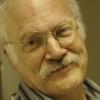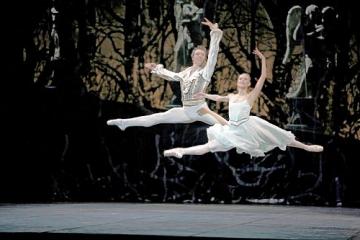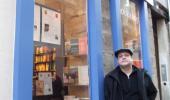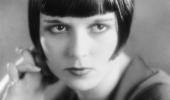Tuesday, July 30, 2024 - 6:30am
'La Danse' documentary long but delightful
Nothing about Frederick Wiseman is more astonishing than his prolificacy. Since his terrifying debut film "Titicut Follies" (1967), about a Massachusetts prison hospital for the criminally insane, Mr. Wiseman has directed 35 subsequent documentaries about the agony and ecstasy of human experience in institutional settings common to all societies.
There's nothing terrifying but much ecstatic in "La Danse: The Paris Opera Ballet," the 80-year-old director's latest, which chronicles the conception, incubation and delivery of seven Paris Opera company ballets.
It employs his signature style: extended shots by a single camera, crisply edited with no voiceovers, no talking heads, no fancy fades, no F/X. Mr. Wiseman works his material in verite style to create what he calls "reality fictions," from which we come away with our own opinions rather than those didactically forced upon us.
Here, the mise-en-scene consists of the backstage corridors and subterranean labyrinths -- dressing rooms, rehearsal studios, set shops, administrative offices -- of the neo-baroque Palais Garnier, an opulent 2,200-seat opera house featuring a gilded proscenium, scarlet velvet seats, Chagall ceilings and grand marble staircases.
The bulk of the film consists of intimate rehearsal scenes and the creative process of dancers and choreographers going about their work in raw, unselfconscious fashion. The seven ballets in preparation range from Rudolf Nureyev's traditional "Nutcracker" to Pina Bausch's avant-garde "Orpheus and Eurydice."
But we're also privy to the mechanics and machinations of a huge bureaucracy at work. The best such moments involve Brigitte Lefevre, the company's savvy artistic director since 1995 -- most notably, her brilliant, behind-the-scenes planning session for a visiting group of big American donors. What to do with $25,000-level patrons who mostly want to see rehearsals and go to embassy parties? Leave it to Ms. Lefevre.
She likewise shines in a terrific scene where the company is assembled for a heavy briefing on union-government negotiations concerning their pensions -- art benefits vs. age deficits. These dancers, like all dancers, are basically finished at 40. Ms. Lefevre advises them to link their private well-being to the continued well-being and success of the company overall: "Keeping your economic status depends on keeping the status of the institution -- one of the world's best. The best way to ensure your pensions is to dance up to our elite standards."
Ms. Lefevre is equally tough with her high-fallutin' guest choreographers: "You can have stars, but you can't waste them -- and you can't neglect the general corps."
Mr. Wiseman leaves no stone (or dainty foot) unturned. Even the company's cafeteria line and cleanup crews are chronicled during the film's massive, demanding 159 minutes -- well over 2 1/2 hours.
You think that's long? Mr. Wiseman's "Near Death" (1989) on the intensive care unit of a Boston hospital came in at 359 minutes -- a nice, even 6 hours!
Much of the rehearsal footage is riveting, but some of it is not. There's a certain TMI -- Too Much Information -- here. "La Danse" would have benefited from more (and better) live performance footage and the trimming of 20-30 minutes of backstage stuff. But fortunately, for Mr. Wiseman, there are more ballet than ICU aficionados. His instinct to let minutiae deliver meaning challenges us. His quirky inclusion of the opera house's beekeeper, for example -- with no comment whatsoever -- is a fab delight. And his transition shots of the Parisian cityscape are perfect.
Unaddressed topics: What do these dancers do when not rehearsing? How can a choreographer who speaks only English explain himself to many dancers who speak only French?
Never mind. Mr. Wiseman's unique style has deeply influenced all other doc-makers for more than four decades. No pandering to audiences with the crutch of narration; just unobtrusive camerawork and the editing of images and sound into a compelling form. What wordless alternative could better illustrate the fragile, ephemeral nature of dance -- the ultimate art form by which a human body expresses feeling and thought?
"Why do you want to dance?" an imperious director asks wannabe-ballerina Moira Shearer in "The Red Shoes" (1948). She answers the question with a question: "Why do you want to live?"
Something about a burning commitment to that art at the expense of a personal life. Something about its impossible beauty and precision, and a dancer's impossible commitment to perfection.
Vote:






